Novosibirsk
Contents
General information and history of Novosibirsk
Novosibirsk, Russia’s third most populous city, spreads out widely on both banks of the Ob River, and every year it spreads in all directions of the world. By its geographical position, it would seem to be equidistant from everything and anything. But its central position between other Siberian regions helps it to claim (and not without reason) the title of “Capital of Siberia”.
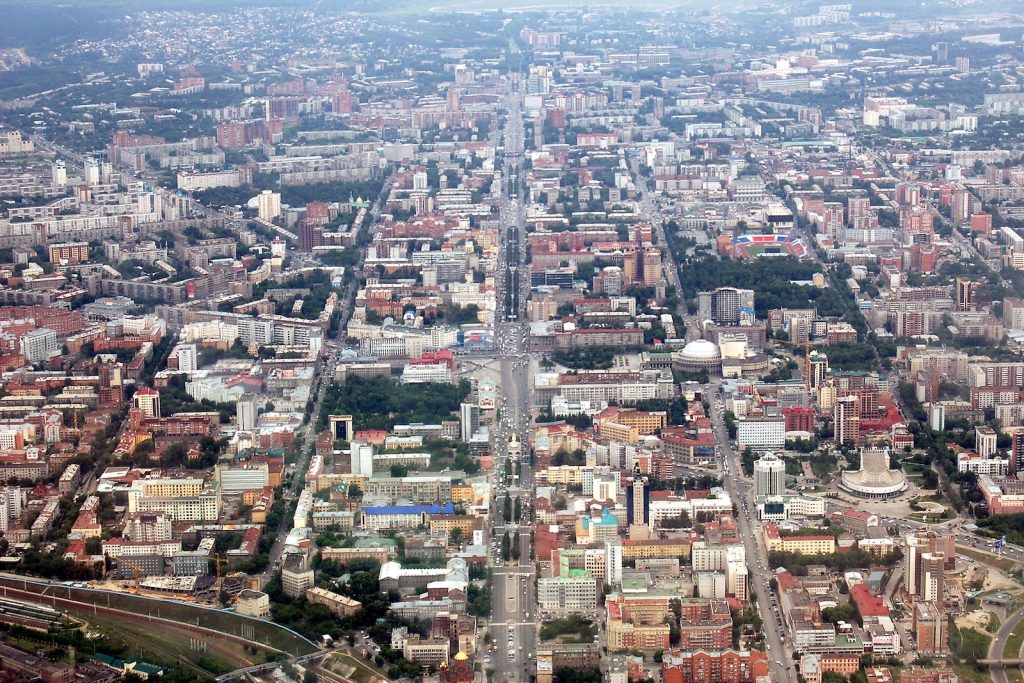
In general, Novosibirsk is the largest agglomeration, which is slowly taking over the suburbs and suburban villages, and soon, it seems, will begin to include entire cities. For example, Iskitim, which is located fifty kilometers from Novosibirsk, is already included in the city limits on some maps. However, about everything in order.
The city owes its origin to the Trans-Siberian Railway, which began to lay in 1891. And two years later, engineer Garin-Mikhailovsky determined the place where the railroad bridge across the Ob will be built.
By the way, principled inhabitants of Kolyvan settlement, that is 40 km from Novosibirsk, to this day should poke needles in dolls of those who authorized laying of Transsib exactly in the place of present Novosibirsk. After all, if Transsib had passed to the north, Kolyvan, probably, now would be a city of millions. And the small settlement Novo-Nikolayevsky with ten thousand population would humbly prepare to enter Kolyvan agglomeration….
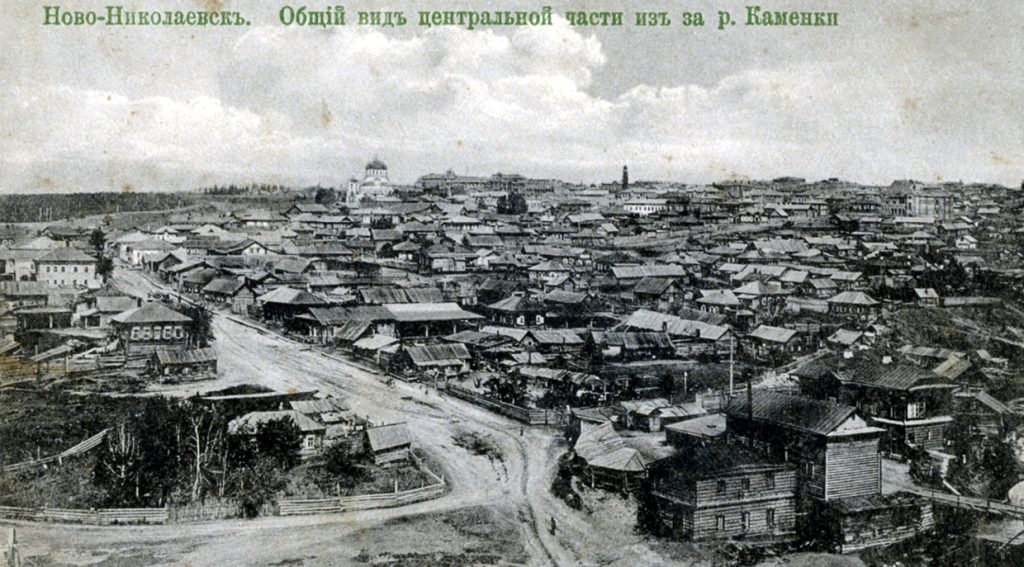
But the most powerful impetus to the city’s development was, strangely enough, given by the Great Patriotic War. A huge number of factories and scientific institutions evacuated to Siberia made the city one of the largest industrial centers of the USSR – and the number of residents after the evacuation of Leningraders here at once increased almost by half.
Climate and ecology of Novosibirsk
The weather conditions in Novosibirsk are among those things that can make even a native Novosibirsker go into a seizure – and a visitor to the city will be driven into a comatose state. The local climate is labeled as “sharply continental,” and the word “sharply” is there for a reason. For a Novosibirsk resident there is nothing surprising in the fact that from the fierce winter with birds dying on the fly almost without any transition to the summer, similar to the underworld with all its red-hot pans.
However, the summer can be very cold: for example, in early June 2013 the temperature did not rise above +8, and people walked in jackets and coats, and children – even in hats and scarves. True, this case is almost unprecedented even for Novosibirsk.
But the most amusing climatic trolling lies in the sharp and constant change of temperatures: as a result, it is not uncommon for the snow that fell overnight to melt during the day, flooding the streets, and the next morning the citizens are terrified to step on the crazy ice rink that the sidewalks have turned into. It is possible not to mention such things as almost unceasing wind, especially if it contributes to some extent to the fight for a healthy lifestyle: after all, it is very difficult to light a match and smoke in a squally wind – it goes out instantly.
As long as we are talking about the health of the population, we should also mention the environment, and the picture here is quite ambiguous. On the one hand, Novosibirsk is surrounded by a living ring of defense against environmental negativity – dense forests, which even in the city itself have been preserved in pristine condition. These forests are the main reason why you can walk around the city without a respirator. After all, many factories in Novosibirsk work like clockwork, and the best ones are those that “enrich” the city’s air with the most harmful emissions, such as the chemical concentrates plant or Khimplast.
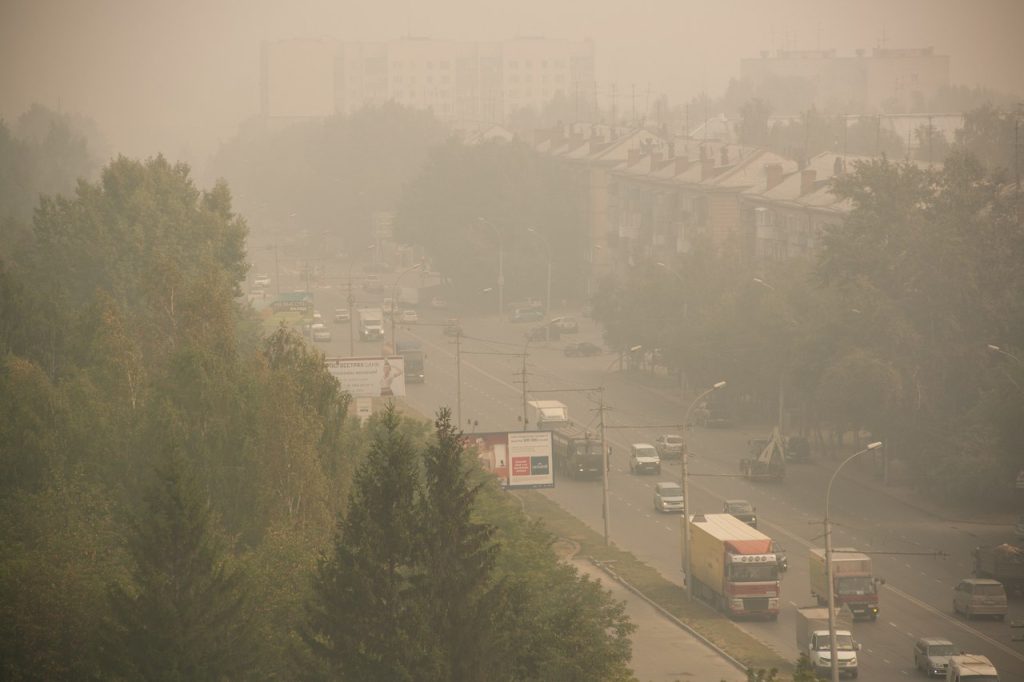
The local ecology has its share of charm due to the thermal power plants built close to the river, thanks to which a piquant haze is always hovering over the Ob (because of it, the right bank is sometimes invisible from the left bank). Nevertheless, if we compare it with other large megacities, there is nothing ultra-nightmarish about Novosibirsk ecology – and thanks to the forests, it is probably better than many. Everything depends on specific places. For example, those who live in the “fork” between Molkombinat on Oktyabrskaya Street and Khimplast on Fabrichnaya Street can be sympathized with: after opening the window and letting the marvelous amber of sour milk into the room, they run to the balcony to get a breath and get their charge of emissions from the chemical plant. Naturally, those who live near the Botanical Garden are more or less insured from such horror.
Water in the city is not easy either. Its filtration systems in Novosibirsk – at the level, so that the water from under the tap can sometimes be cold and even tasty. However, if you do not filter or simply do not boil this tap water, you are a recklessly brave person. No one canceled all kinds of toxic factory stuff dumped into the river, and as a result, the river water in some places looks, let’s say, peculiar.
It is even sadder to look at unhappy fish floating on the surface, swarming with opisthorchs and other parasitic nastiness – so you should be cautious when eating river fish.
Population of Novosibirsk
Novosibirsk in the last century was famous as almost the fastest growing city in the world. Indeed – from a tiny working village in the middle of nowhere, it turned into a megacity with a population of millions in less than a hundred years. The trends continue even now: according to the most recent 2020 data, the city’s population is 1,625,631. And although it is not uncommon to hear that the population is growing only due to migrants, the reality is a bit more complicated.
Of course, there are many migrants in Novosibirsk, including illegal ones. The legendary Novosibirsk “flea market” – the Siberian analog of the odious “Cherkizon” (more about it below) – is particularly conducive to their influx into the city. Moreover, the Novosibirsk Region is quite accessible to migrants from Kazakhstan (even buses go there), Central Asia, and even China.
But on the whole, the situation with migrants is not too different from that in other large cities.
A special article is intra-oblast migration, and this point should be discussed separately.
The fact is that the Novosibirsk agglomeration is a rather specific entity. It is, in fact, a Big City, around which a number of small villages and towns are clustered. The population of Novosibirsk accounts for 80% of the entire agglomeration – and it is constantly increasing due to the influx from the suburbs. This is understandable – there are a lot of jobs in the city, and the standard of living in general is much higher. That’s why mostly able-bodied population and young people go from the region to the megalopolis.
The percentage of this able-bodied population is more than 60%: it is almost 900 thousand people. Another 200 thousand are minors, and more than 300 thousand are pensioners. In terms of gender, so to speak, Novosibirsk is divided in the proportion of 45% men to 55% women. The birth rate exceeds the death rate, albeit slightly, and although this is largely due to the recent “baby boom”, but the fact is the fact – stores with maternity clothes are not empty here.
As for the educational level of the citizens, things are not bad, and somewhere even good: after all, as long as the city only has more than thirty “own” universities, and branches of a dozen and a half – it would be strange and unfortunate if the “learning” of Novosibirsk citizens was at a low level. Novosibirsk is generally considered to be a city of scientific – but about this a little later.
Novosibirsk neighborhoods and real estate
Novosibirsk as a whole consists of ten districts with trivial Soviet names. Three of them (Zheleznodorozhny, Tsentralny and Zaeltzovsky) since the beginning of 2013 have been united into one district, which, however, few Novosibirsk residents guess.
By and large, we can talk about three sectors. These are the right-bank part (Zheleznodorozhny, Tsentralny, Zaeltsovsky, Kalininsky, Dzerzhinsky, and Oktyabrsky), the left-bank part (Leninsky and Kirovsky), and the Pervomaisky and Sovetsky districts, which stand apart (and Sovetsky, which includes the famous Akademgorodok, is cleverly located on both banks at once).
Almost every neighborhood (except, perhaps, the Central District) is roughly divided into two parts. In most neighborhoods there are both wonderful central streets with wide avenues, squares and high-rise buildings, which would look appropriate in Manhattan, and rather wild slums, which would give even an experienced person goosebumps (guests of the city usually try not to show them). Moreover, often all of this is perfectly coexisting within not only one neighborhood, but also one small patch (see, for example, the alley with dilapidated barracks a step away from the city’s largest shopping mall “Aura”).
On the other hand, the program of resettlement of dilapidated and emergency housing in the city operates quite tangibly. This is explained not so much by the altruism of the authorities, but by the fact that the land occupied by slums (especially closer to the center) is manna from heaven for developers. That is why the sharks of construction business master such land very confidently: an example of this is the beginning of Kommunisticheskaya Street in the city center, where for the last five years almost all dilapidated wooden buildings have been demolished and three business centers have been erected on a small patch of land (now the fourth one is under construction, and also on the place of former barracks).
Zheleznodorozhny district
Zheleznodorozhny District, which until 1957 had the touching name of Kaganovichny District, is small in size (area of 8.3 km2, population – 58 thousand), but in the history of the city occupies an important place – it was here that the first houses of the workers’ settlement, which later became Novosibirsk, stood. And they stood here for a reason: they were inhabited by workers who laid the local section of the Trans-Siberian Railway. That is why the main part, the “face” of the district is the Novosibirsk-Glavny railway station and the adjacent Garin-Mikhailovsky Square.
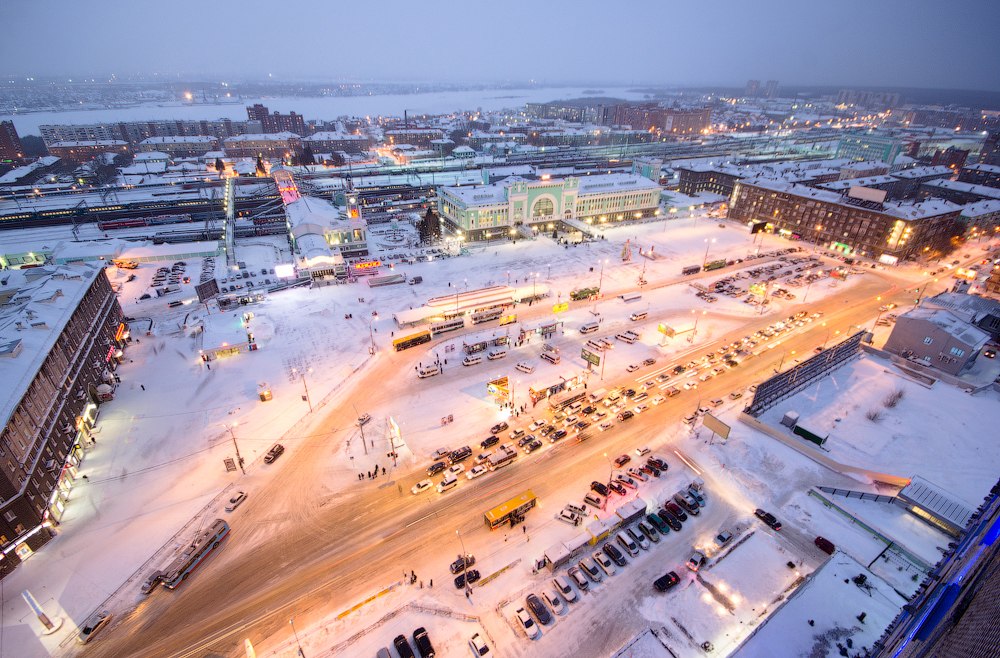
Station territories are those lands that go from the station towards the center. Everything is fine there: there are almost no blatant ruins, and those that are, are being actively demolished to make way for new buildings. Here is also located Novosibirsk Circus, Ascension Cathedral – one of the largest churches in the city, TSUM and Narymsky Square – a large and wonderfully cozy park, where you can still see squirrels on the trees.
The same can be said about the “Quiet Center” – a microdistrict, whose name fully corresponds to the content. On the one hand, it is the most central center – a five-minute walk to the main city avenue. On the other hand – historically there are not so many educational institutions, large enterprises, and even less highways. Therefore, even at rush hour, life here is quiet, rather measured, and even half asleep. And even most of the local business centers are filled with tenants at most half full. So the “Quiet Center” will remain quiet for some time to come.
Much less enthusiasm is aroused by the fact that on some maps is called “Coastal microdistrict”. These are the areas from the station going down to the river. And if “Pribrezhny” itself still looks pretty good, then the absolutely odious “Nakhalovka” – a chaotic cluster of self-built barracks near the river – makes a person from the outside weep bloody tears at its sight. A few years ago, the city authorities published a hilarious plan for the development of the area until 2050 (!), by which time Nakhalovka should become the business and cultural center of Novosibirsk with an embankment, a park, a metro station and other wonders. Perhaps the grandchildren of today’s young residents will indeed walk along the wide coastal avenue in the evenings, but for now it is a long way off.
Real estate prices in the district are in direct correlation with the proximity to the center. Naturally, the cheapest apartments are in the houses located behind the station, on the outskirts – and the housing stock there, compared to the center, is dismal. In general, the cost of housing in the district is above average.
Central District
The smallest district of Novosibirsk (6.4 square kilometers and 74 thousand population) is at the same time the most important. Officials of the mayor’s office and regional administration wisely and tirelessly manage the city from here, and the office of the SFD Plenipotentiary Envoy is also located here. Dozens of banks, the largest business centers are located here – that is, in fact, the Central District is what in the West is called “downtown”, the business part of the city. Cultural life, architectural monuments (which are not so few even in such a young city) – all this is here in abundance. Many of the most important highways pass through the district – that is, it is like a connecting link, the “heart” of the city. The main square, the main street, the main park of the city are located here – in general, the word “Central” in the name of the district means not only geographical location.
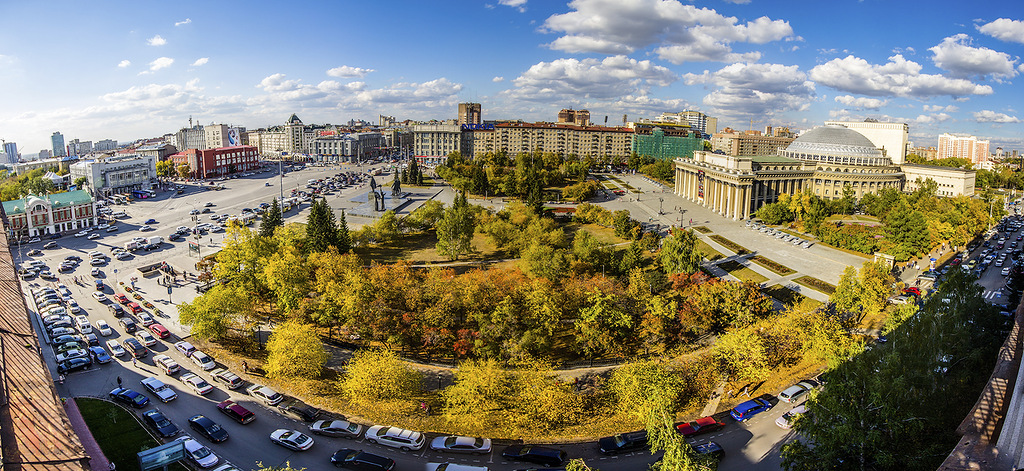
By and large, it makes sense to divide the district into two sectors – “downtown” and “uptown”, respectively, below and above Lenin Square. Everything below is exactly the same “quiet center” as in Zheleznodorozhny. Actually, these two districts border each other, and it is very difficult for a person from the outside, who got to the center, to understand in which district he found himself. And although life here is still much more lively – but also cozy quiet places where you can sit in the morning with a newspaper and a thermos of hot coffee, also plenty. There is also a bus station, the beautiful Alexander Nevsky Cathedral, the Mayakovsky movie theater and other significant places. The livability of the neighborhood is at the highest level: transportation from here goes to almost any part of the city without interchanges, and the prices in chain supermarkets like the network of “Department of successful purchases” – more than loyal.
“Upper” part of the district, going north to the border with Zaeltzovsky, “quiet” place no one would call it. This is the city center in the broad sense of the word. To begin with, here is located, in fact, the main square of Novosibirsk – Lenin Square, around which life is boiling even deep at night. In the same part of the district is the Central Market – I think we can not say how popular this place is. A huge number of banks, stores, companies, places of cultural leisure – all this is here. Two large parks – Central Park and Pervomaisky Square – are almost never empty, even though in Pervomaisky Square there are ten people willing to sit on one bench. And the exit from the square to Lenin Square has long been favored by merry freaks of all stripes. If in Dzerzhinskiy district they would be looked at obliquely, and in the Western residential area they could be treated, um, intolerantly, – here they look appropriate and mock Scotsmen in kilts, and girls painted as vampires, and a completely crazy man on stilts, who once advertised here pans “Zepter”. There is, however, a problem here – the nearby fat factory sometimes spreads an inconceivable odor throughout the center.
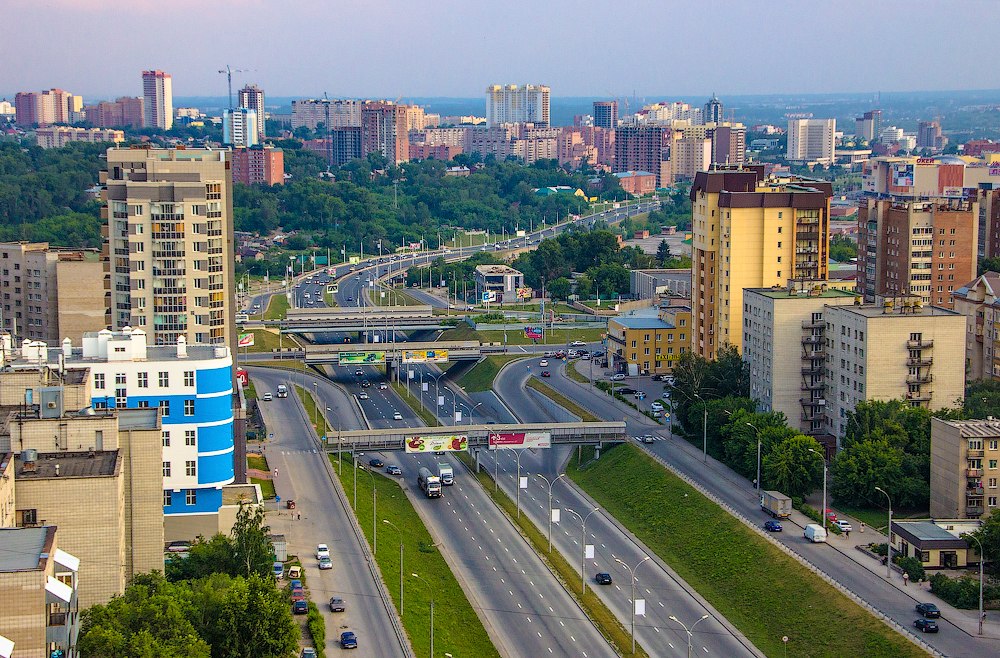
From the point of view of living comfort, this is by far the best district of the city – unless, of course, a person is uncomfortable living in the noisy center. If it does, then the Central District is not the best place to live. There is practically no private sector here, and the one that is left is clearly living out its last years. Small “wooden” enclaves have survived closer to the freshly built Kamenskaya highway – and five-seven years ago there was practically a full-fledged village there.
Of course, the medal of increased comfort has a downside. Seeing the local price for housing, an unprepared person can experience a very strong cognitive dissonance and express it in words that are not accepted in decent society.
Zaeltsovsky district
This is the last district of those that are part of the freshly formed Central District of Novosibirsk. A hundred years ago there were only dense forests here, a natural taiga – and, surprisingly, in some places these forests have remained almost untouched. This is the largest district in the city (83 km2, approximately 140 thousand population).
In terms of originality with Zaeltzovsky district can compete only with Sovetsky. Indeed: it is worth to remove a couple of kilometers from Kalinin Square – and you can get into a natural forest, and almost man-made. A couple of steps in the other direction – and you already find yourself in the wilds of the private sector. This is the whole “Zaeltzovka”. However, strangely enough, it does not leave the feeling of a “city of contrasts” at all – on the contrary, the overhanging crowns of trees (and right in the middle of these trees are quite typical new buildings) evoke the feeling of something whole and untouched by civilization.
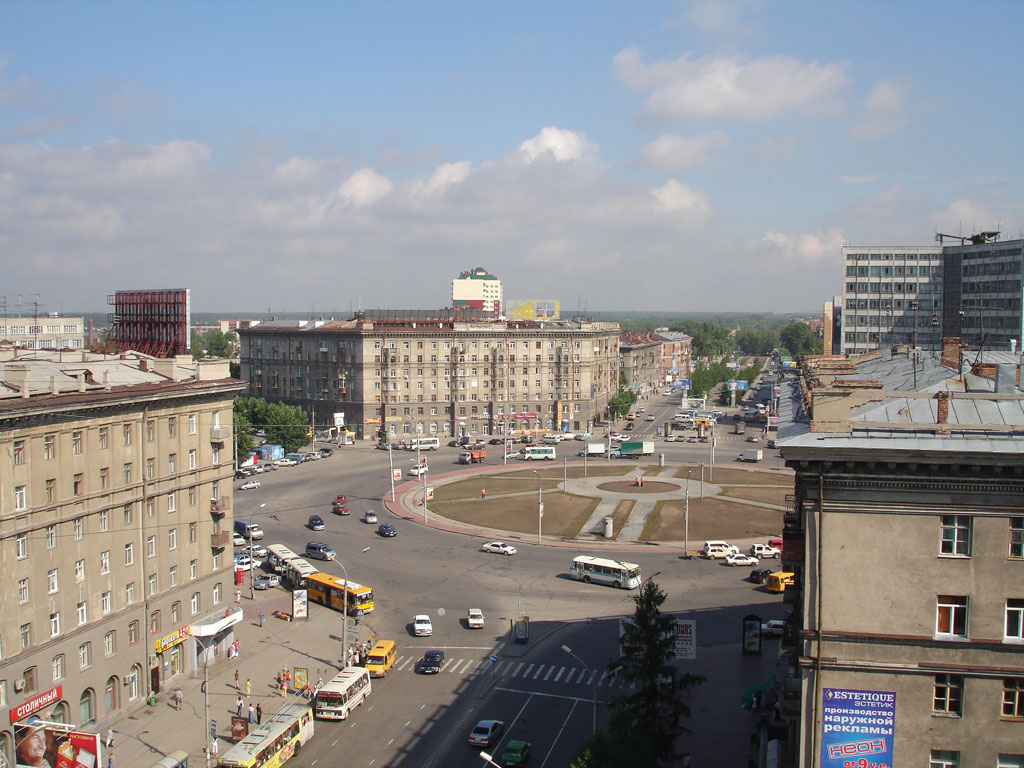
The areas adjacent to Kalinin Square are quite a center, no different from what we see around Lenin Square. If you move north and drive to the end of Krasniy Prospekt, you will come to the Severny Airport, now defunct. However, according to old memory, this area is called Airport (and quite officially it is the name of a street with a VERY strange layout).
To the east, towards the Kalininsky district, there is a private sector – somewhere horrible, somewhere quite decent. With the appearance in those parts of a couple of hypermarkets and the rudiments of a direct highway leading to the deep Kalininsky district, the development of this area has become much more active.
Let’s go the other way – from Krasniy Prospekt to the strategic highway called “Zhukovsky Street” and to the river. It is in this interval that the main riches of the district lie – the “lungs” of the entire Novosibirsk right bank. These are dense forests, right in the middle of which stand new residential areas mixed with rather old houses. There are three places where you can go, if you suddenly want, on the one hand, to be in nature, on the other – to do it without getting too far away from civilization. These are Zaeltzovsky Park, Botanical Garden with unique “red-listed” plants and, last but not least, Novosibirsk Zoo – it is too bright spot in the city geography to be mentioned briefly. Therefore, we will talk about the Zoo separately.
There is still plenty of vacant land in the Zaeltzovsky district, given its huge area, and development is proceeding apace. And more and more wealthy people are coming here – given the huge prospects of the district, good ecology and relative proximity to the center, housing here is being bought actively. However, there are a lot of old houses here, apartments in which are quite inexpensive – therefore, the “average temperature in the hospital” here is lower than in the central districts.
Kalininsky district
Kalininsky district borders with Zaeltzovsky district from the east. It is the youngest district of the city – it was formed in 1980. This, of course, does not mean that until the 80th in its place was emptiness and snow, on which predatorily trotted wolves and wolverines. Simply this year it was decided to separate Kalininsky district from the excessively bloated Dzerzhinsky district. It is logical, because Kalininsky immediately began to swell like on yeast.
Kalininsky is a district, not very large in area (46 km2, population – 183 thousand), but, as you might say, saturated. Even if we do not count Pashino settlement, included in the city limits in 97, there are dozens of micro-districts here. There are, say, neighborhoods with romantic names 4th (“Jubilee”), 5th (“Snegiri”) and 6th (“Rodniki”). At the same time, nobody has ever heard of the 1st, 2nd and 3rd neighborhoods, and not every resident knows that “Yubileika” is the 4th.
The main artery of the neighborhood is certainly Bogdan Khmelnitsky Street, commonly referred to as “Bogdashka”. It is a charming place – a long avenue with amazing, some very European architecture. When you walk along “Bogdashka”, it seems as if you are somewhere in Prague or Vienna. The abundance of greenery, fountains, quiet, peaceful streets just a step away from the central avenue and a natural pine forest spreading out there – all this makes Bogdashka one of the most attractive places to live in the whole city.
Not far behind Bogdashka is the Plekhanovsky housing estate located a little to the south – a nice and well-appointed neighborhood at the intersection of Ippodromskaya and Kropotkina Streets. Pluses he has a lot – good transportation accessibility, relatively new houses (not counting, of course, spread a little further private sector), and to the Red Avenue from here ten minutes leisurely step.
If from Bogdan Khmelnitsky St. move approximately to the north-northeast, we get into the realm of neighborhoods – the same 4-5-6 plus the so-called “Severny settlement” – an extremely peculiar and not very quiet place, which a few years ago was considered a hotbed of drug trafficking. However, Severny is an obvious outsider, a kind of dead end. True, in the 90’s “Rodniki” and “Snegiri” were also considered as such – up to the inter-district fights “wall to wall” – but now they are confidently developing young residential areas, where more and more traffic goes and where there is even a real mall with a baroque name “Golden Park”. There is, however, a problem – the industrial giant NZKhK located in the immediate vicinity, which from time to time enriches the local atmosphere with chemical emissions.
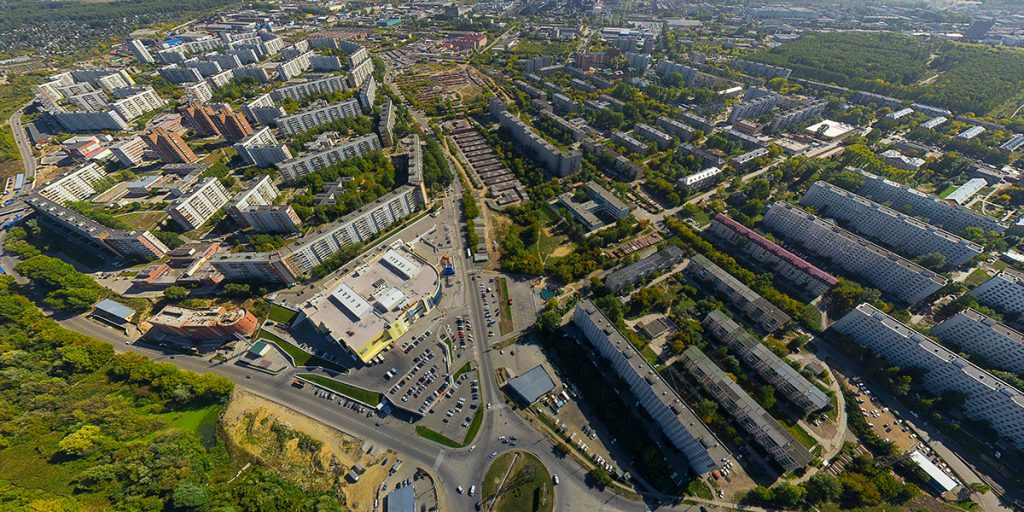
In general, except for some blind spots, Kalininsky district is a place where it is not only possible, but also highly recommended to live. Pricing depends, as in most cases, on proximity to the conventional “center” and “freshly built” houses.
Dzerzhinsky district
From Kalininsky we move further south-south-east and find ourselves in Dzerzhinsky district. This district is very heterogeneous, and along with rapidly developing residential areas, it also contains, let’s say, stagnant neighborhoods (the word “depressive” would still be too harsh). Even 15-20 years ago the situation there was a bit gloomy, but the construction of the metro line “Dzerzhinskaya” became a very powerful developing factor. The size of the district is 41 km2 (i.e. Kalininsky has already outgrown its “father”), the population is about 160 thousand.
As in many other districts, Dzerzhinsky has its own main street – Dzerzhinsky Avenue (which is logical). It is a long and wide street, with gloomy-monumental “Stalinist” houses and excellent transportation accessibility. Houses here are mostly old, but built on the conscience, and after a good repair turning into real apartments. In two steps – the famous in the city park “Birch Grove”, whose name speaks for itself, and at the end of the avenue – a park named after Felix Edmundovich. In the past, the park was a rather sad sight, but recently some work has been done to improve it.
Right after Dzerzhinsky’s garden, the private sector that runs to the border with the Oktyabrsky district begins – a place as harsh as three Chelyabinsk cities at once, a place where it is better not to go without a guide from the old-timers. It is quite a village – with the appropriate level of improvement. For example, gas has been installed there only recently, and let’s just keep silent about the sewerage system. The southern border of the sector is adjacent to the iconic Gusinobrodskaya flea market, which also makes its mark. One of the largest Novosibirsk cemeteries is just a stone’s throw away.
If you go back from the private sector towards the city center, you get to the western part of the Volochaevsky residential area. These are quite decent places, with high-rise buildings and transportation, from where it is not far to the busy and wide Bogatkova Street – one of the main arteries of the eastern right bank. An additional incentive for the development of the area is the project of the metro station “Dovatora”, which will be the next after the relatively new station “Zolotaya Niva”.
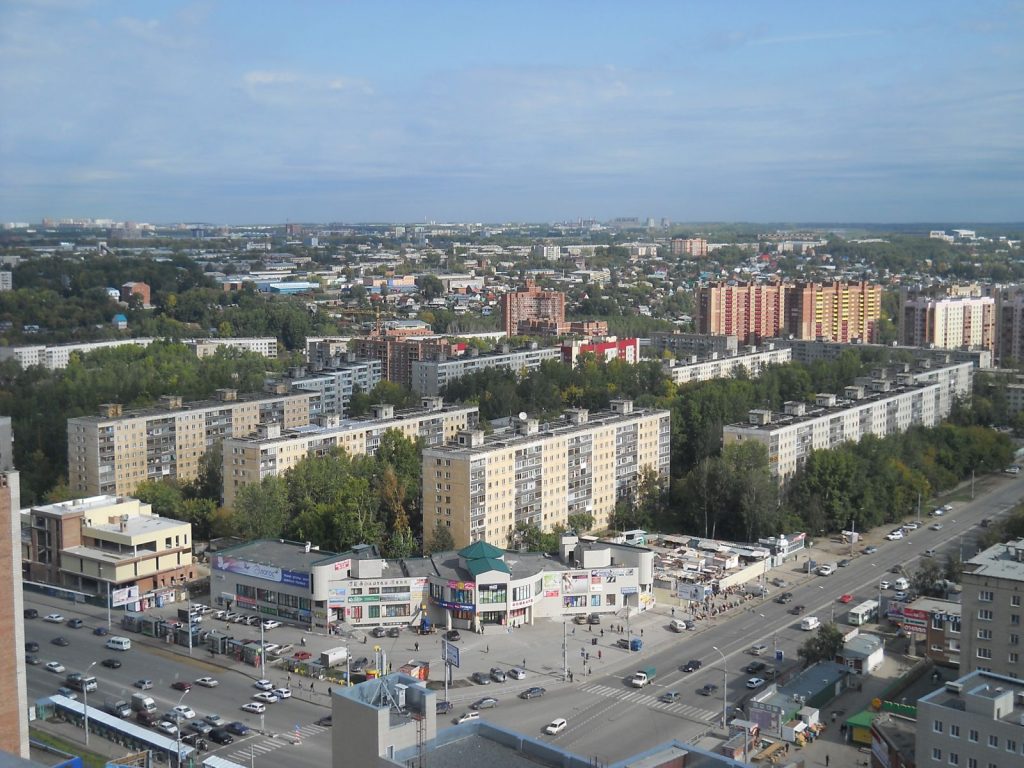
If you go up from Dzerzhinsky Ave. to the north, to Kalininsky, the places there are also quite eclectic. The main thoroughfares there, Aviastroiteley Street and Uchitelskaya Street, are quite “central” places, with a wide road, a streetcar line and plenty of public transport. On the other hand, if you go deeper behind the new high-rise buildings, the private sector with barracks will begin again – however, the neighborhood is developing quite steadily, and soon the tenacious hands of developers will probably reach these lands. The main problem of this residential area is that it is squeezed on both sides between huge industrial zones, which creates certain inconveniences.
In general, for comfortable housing in Dzerzhinsky district there is almost everything – if you know where to choose this very housing.
Oktyabrsky district
From the territory of Dzerzhinsky district you can inadvertently get to Oktyabrsky district – their borders in some places are so mixed that it is difficult to understand where one ends and the other begins. Oktyabrsky is one of the oldest districts of the city. In the 20s it was called Zakamensky, because it was separated from the central part of the city by the Kamenka River. This is a large district (57 square kilometers and almost 200 thousand people), and here it is just and claims to be a “city of contrasts” – there is no such eclecticism, perhaps, no other district of Novosibirsk.
Two central highways – Bolshevistskaya and Kirov Streets – originate from the city center. Bolshevistskaya is one of the main strategic highways of Novosibirsk: in fact, it is the only road that can be used to get to Akademgorodok from the center. It is also used by heavy-duty trucks going to/from the city, causing attacks of acute love among car owners standing in traffic jams. The street is built up strangely: residential houses are in direct neighborhood with several large factories. On the whole, however, it is quite possible to live there – and the best place to do it is where the housing estate slopes directly down to the river.
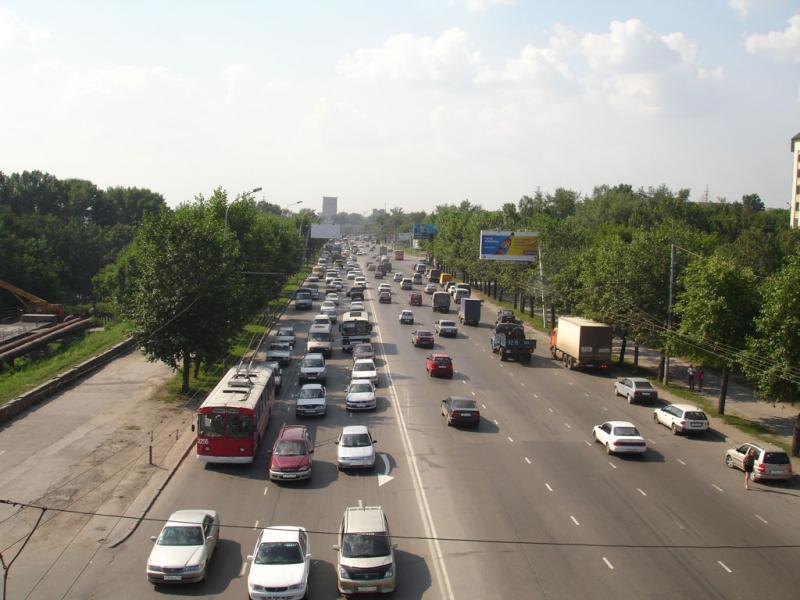
Kirov Street is divided into two parts. The one that starts near the center is an elite place: with expensive housing in luxurious new houses, a metro station, plenty of transport, a huge fountain and other joys of life. Somewhat farther away are quite old houses, and these places can’t be called an “elite” neighborhood. However, it is not a slum – a standard old neighborhood, even not devoid of some charm. And relatively recently the street has received a long-awaited continuation – an excellent new overpass, leading directly to…
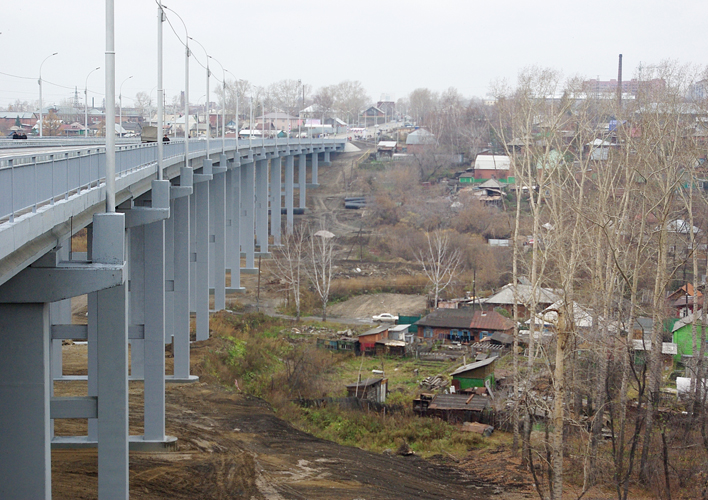
Pedagogical Institute. The very name of the residential area shows which institution is the district-forming institution here. The Pedagogical University area has always been quite difficult to access (the road leading to it from the always jammed Bolshevistskaya), but the construction of an overpass has removed some of the transportation problems. The neighborhood itself is quite nice: with a lot of new buildings, quite a dense forest and masses of pretty young female students renting housing there. A spoonful of tartar is the nearby hulk of CHP-5, from whose pipes the world’s evil rises and “flies with a cloud, a blue cloud straight to your home”. And even farther behind the CHPP is the Klyuch-Kamyshenskoe Plateau – a neighborhood near the forest and quite progressive, whose main problem is a weak infrastructure.
We have considered the lower part of the neighborhood, now let’s go up. And we’ll go from Voskhod Street. This is a real gateway of the right bank – a charming avenue with a wide pedestrian alley in the center, going straight to the October Bridge. Moving on, we get to Shevchenkivsky residential area. Even 15-20 years ago it was a catastrophic mishmash of settlements, barracks and other quiet horror – now it is a modern microdistrict with a good infrastructure and walking distance to the center.
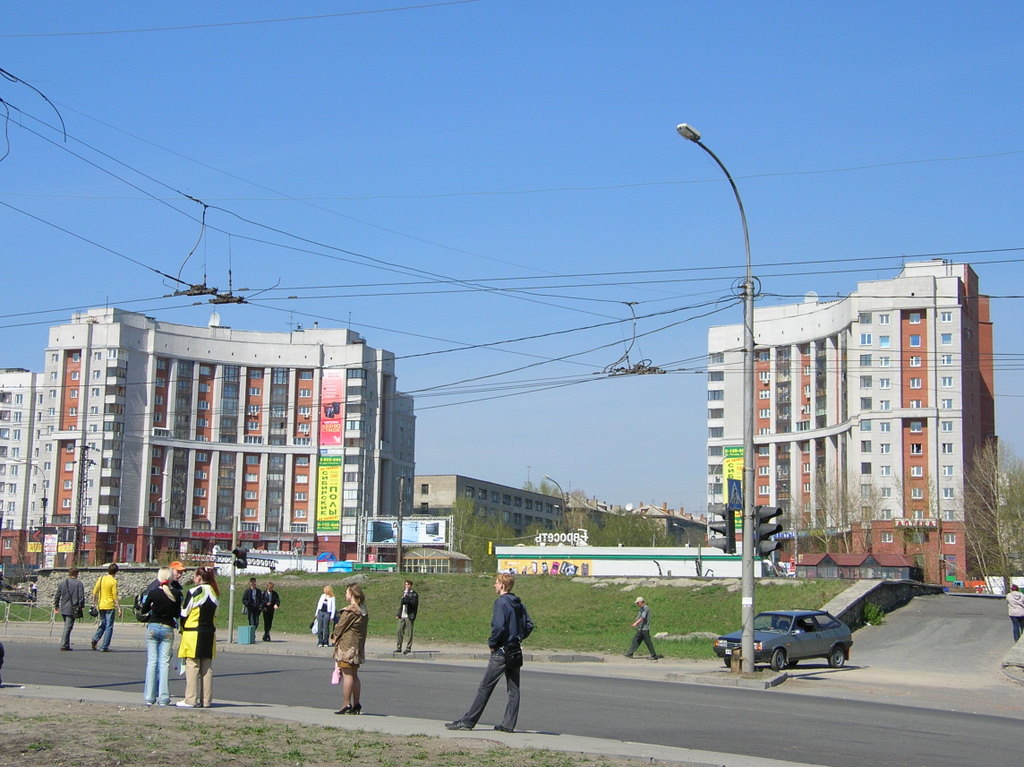
Moving along Bogatkova Street, you can get to the Dzerzhinsky District, but we have already been there. So it’s better to go down Nikitina Street to the last of the uncovered residential areas after a quick look at the Oktyabrsky Market. On the way we will have to pass the private sector – vast, but not especially depressing; and in its depth, on Autogennaya street, even one of the first hypermarkets in the city “Giant” lurks.
Finally, the famous by city standards MZhK-Vostochny, located at the very junction of Oktyabrsky and Dzerzhinsky districts. This array is ambiguous: on the one hand, new houses, more or less well-established infrastructure and several large shopping centers on the side, on the other hand – a strong remoteness from the center, constant wind (especially unpleasant in winter) and the proximity of the “flea market” with its crime, illegal migrants and so on.
Leninsky district
From the Oktyabrsky district we get to the left bank by the Communal Bridge. It used to be a completely separate universe (as Akademgorodok is now) – what can we say, until the 20s of the last century the left bank existed in a different time zone! The left bank began to develop relatively late, and in this development it followed its own, special way. The Sibselmash plant became a district-forming enterprise – at that time it was the only large enterprise on the left bank. Initially, the left bank was one amorphous piece of territory of gigantic size, but poorly populated – however, for forty years it grew so much that in 70th year it was multiplied by the method of division into two districts – Leninsky and Kirovsky.
Leninsky district initially did not exist as such – as an administrative unit it was separated from the inordinately bloated Kirovsky district. But by its geographical position it includes the actual center of the left bank – Marx Avenue, ending with the square of the same name. It is the most densely populated district of the city (nearly 300 thousand people), although not the largest in terms of territory – 70 km2. Both bridges connecting the banks of the Ob River (plus the railroad bridge) are also located here, which puts its own imprint on the development of the district.
Marx Avenue and the adjacent territories are practically the same center as in the right bank, with all the consequences. That is, on the one hand, developed infrastructure, excellent transport accessibility, abundance of public catering – from dubious shawarma shops to luxury establishments with a very inhumane price tag, cinemas – in short, dolce vita. On the other hand – high prices for housing and endless noise and stench from cars standing in traffic jams. And traffic jams during rush hours here, believe me, are unprecedented.
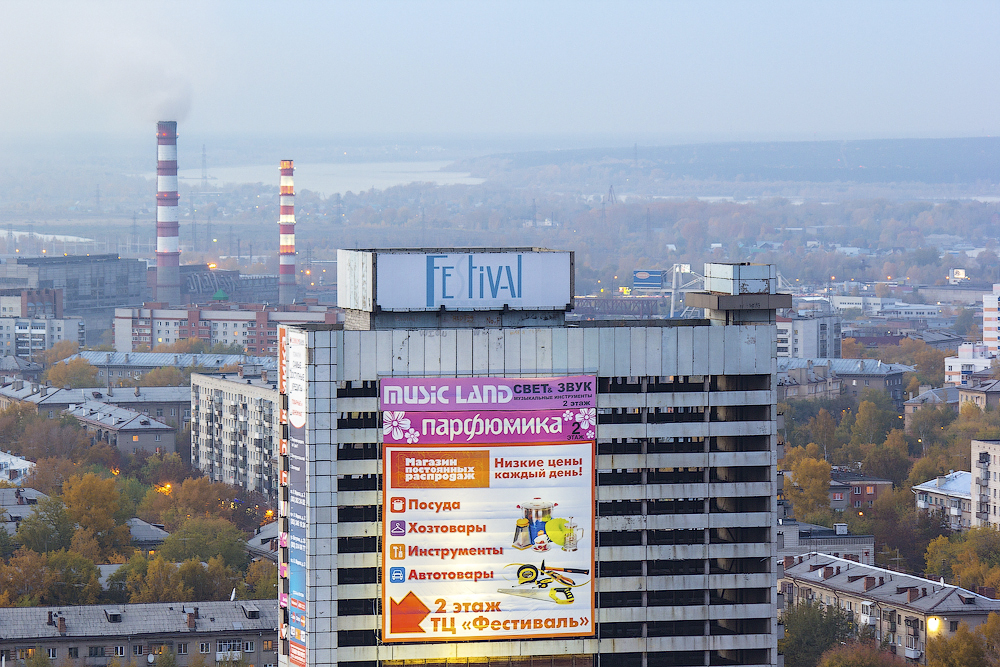
Quite close to the exit from the bridge is the Gorsky residential area – corresponding to its name, it stands on the hills not far from the shoreline. This is a relatively new neighborhood – the area was built up only in the early 90s. Therefore, all the typical diseases of growth are present here – a typical building of panel houses (blown through by the winds from the river), uncontroversial layout of streets and roads on which you can shake your bones worse than on roller coasters. Housing here, however, is quite inexpensive, and the main plus is the location: not only is there a marvelous (in some places) view of the river and the right bank, but you can walk to both bridges in fifteen minutes.
The new, Dimitrovsky, bridge goes to the left bank from the Zheleznodorozhny District and goes to the Labor Square, from where two paths lead. To the south is the long and typically “central” Stanislavsky Street with the square of the same name (to which they promise to run the subway from Marx Square in the near future). It is almost analogous to Marx Avenue in all respects. To the west leads Stantsionnaya Street, almost entirely consisting of industrial zones. This street is notable for being one of the two roads (“new”) leading to Tolmachevo Airport. It is a spacious new highway, and drivers prefer to drive to the airport on it rather than take a detour and drive over potholes on the old Tolmachevo highway to the south.
Approximately in the middle between the two highways to the airport is the so-called Western residential area. The longest street Titov leads there from the center of the left bank. When you walk along it for the first kilometer and a half, nothing portends trouble. However, the farther you go into the private sector, the heavier your heart becomes: the houses become older and more neglected, and the sounds of Butyrka from the windows become louder and louder. In the evening, you might get a pat on the head. They may not – especially if you are from the neighborhood. However, a little further north, on Tankistov Street, everything looks much more civilized – it’s a typical bedroom community with high-rise buildings, a public garden, several bus routes, and even a soccer stadium.
The South-West microdistrict is located even further south – behind it begins Tolmachevskoye highway with industrial zones and warehouses, warehouses, warehouses… About 10 years ago, the neighborhood was famous for the fact that the local gopota could pick the pockets of a visitor right when he got off the bus, and you couldn’t walk down the street without stepping on a used syringe or something worse. Now, however, the array looks much better, at least externally – and the “apofigee” of landscape design here is the real T-34 tank on Victory Boulevard. Otherwise, this is a completely ordinary and unremarkable bedroom neighborhood.
The last, let’s say, microdistrict to stop at is a settlement with the romantic name Zaton, located on the river bank in direct proximity to the Dimitrovsky Bridge. It is like Novosibirsk in miniature – in the sense that it is located on two banks separated by a river channel. It is not necessary to speak about any infrastructure there – there is a school, kindergarten, and a couple of stores – and that is good. Only one bus goes there, and only to the “left bank part” – in the “right bank” you have to walk from the bridge. However, if you are a motorist, it is quite possible to live there, but you should build a house far away from the shore, because the floods there are catastrophic.
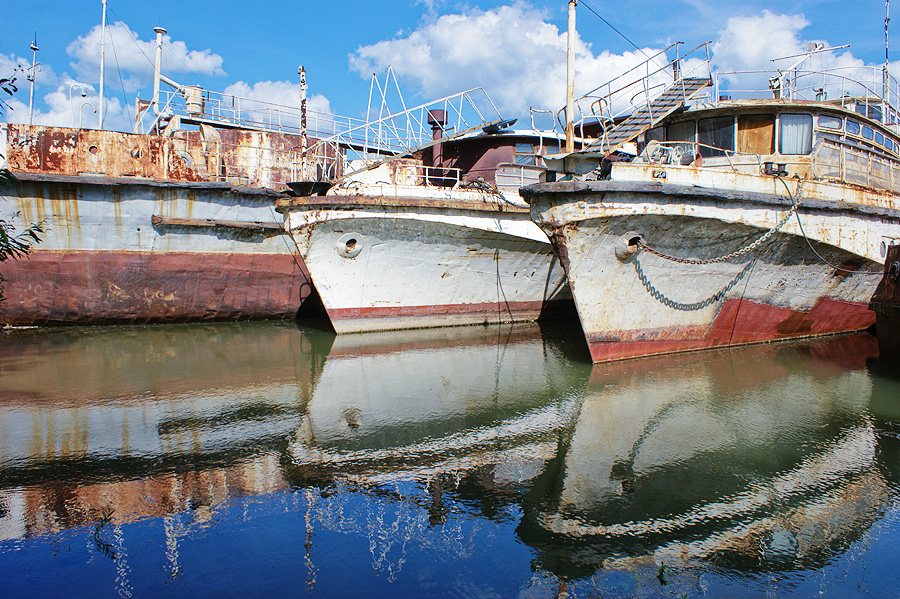
Prices for housing in the district are relatively loyal, even if you don’t go far away from Marx Ave. For a young family that does not yet have money for an apartment in the center, but does not want to go to the middle of nowhere, Leninsky district is the best.
Kirovsky district
Once Kirovsky district was the only one in the Left Bank. However, now it is inferior to Leninsky district in terms of territory (52 square kilometers) and population (174 thousand). The main feature of the district is, perhaps, endless industrial zones. The central part of the district is weakly expressed – it is first of all Nemirovich-Danchenko Street and its intersection with Sibiryakov-Gvardeitsev Street. This part of the city is traditionally called “Sov. Siberia” – by the name of the largest publishing house located here.
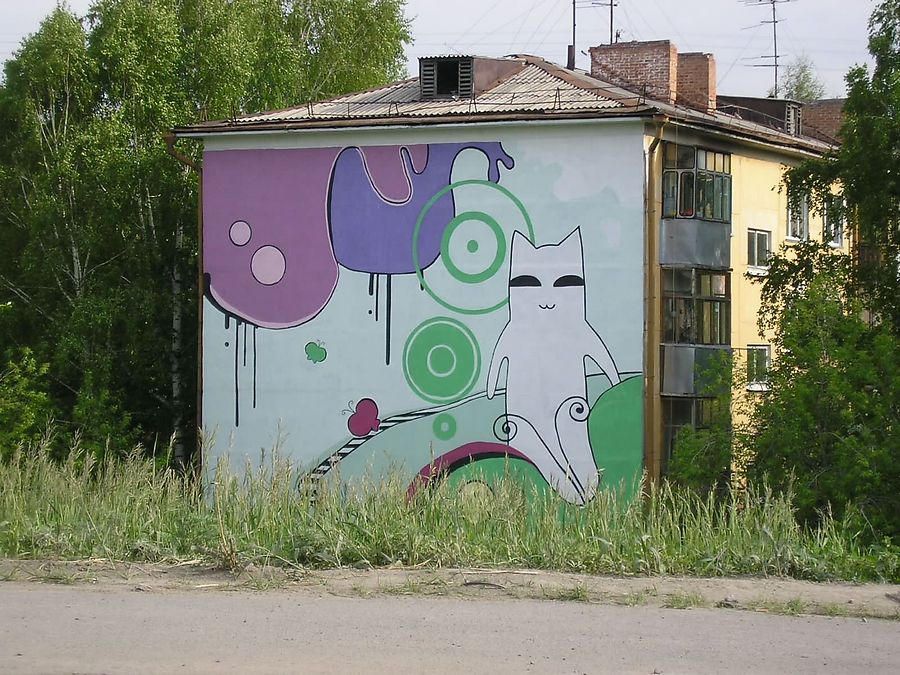
From the center, you can move east and go straight to the Severo-Chemsky residential area and Bugrinskaya Grove. These are quiet and peaceful neighborhoods located next to each other and directly facing the river. In Bugrinskaya Grove, in addition to the grove itself, is one of the main city beaches. On the way you can stop at one of the first Novosibirsk shopping mall “Mega”, where, by the way, is laid (this is not a joke) excursion-tourist route from the cities of Kemerovo and Barnaul. In Mega, by the way, there is one of the two Ikea stores in Siberia.
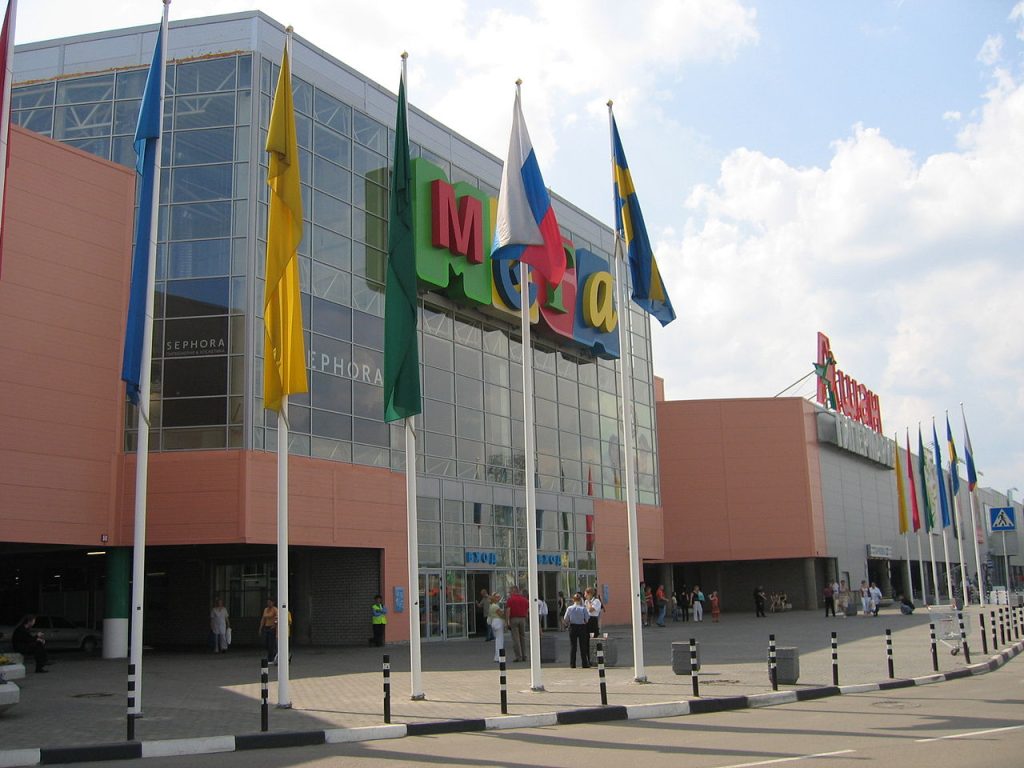
If you go south from SovSibiri, you will pass through a harsh industrial zone with the Elsib plant and get to Petukhova Street. Petukhova is also a land of plants and factories. Stand out on it, firstly, cyclopean scale car market, clearly visible from space, and secondly – a small neighborhood named after the naturalist Pallas. The guys from Pallas are very clear and sharp. This is, perhaps, all that can be said about this neighborhood. Also on Petukhova St. there is a landmark – the legendary banner “Long live that thanks to which we – in spite of everything!”, which satirist Mikhail Zadornov for some reason persistently refers to the city center.
From the south to Petukhova St. adjoins the famous “Zatulinka” – a huge Zatulinsky residential area, where in the 90’s cab drivers did not like to drive. Now this place is relatively civilized, but still in the evenings to go deep into Zatulinka yards without a guide from the locals (preferably that he was a sergeant of the Airborne Forces) is not very recommended. But there is cheap lodging here.
Even farther from Zatulinka begins the private sector known as Bronnye pereulki (18 lanes) – this is hell on earth and apocalypse today. About 80 percent of crime stories in the vein of “Special Forces of the Ministry of Internal Affairs storm the house of a drug lord” are traditionally filmed here. However, if you take a risk and sew this evil empire through – you will get on the Soviet highway to the settlement of Krasnoobsk. This is a great neighborhood, you can say, even elite, and with a very strange street layout (just look at the map, and the questions will fall away by themselves). Its main feature is a lot of institutes, which mostly belong to the Academy of Agricultural Sciences, that’s why the neighborhood is often called simply VASKHNIL.
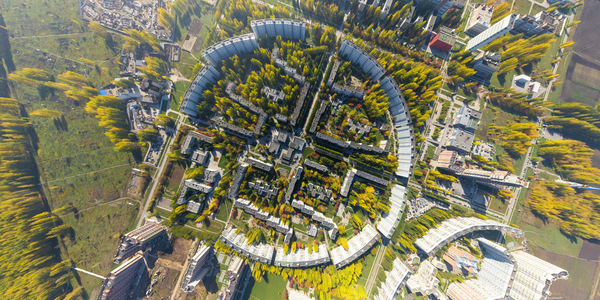
The openly peripheral nature of the district largely influences the cost of apartments here, which are generally lower.
Pervomaysky district
On the right bank we still have Akademgorodok, but you can get there from the center only by one way – through Pervomaisky district, “Pervomaika”, which is covered with legends. It is a large district (71 square kilometers), but rather sparsely populated – 72 thousand people. Pervomaika is almost mythical place in Novosibirsk, something like Valhalla, inhabited by the souls of heroes-cons. The reason for this is the famous in the 90’s and entered the city folklore “May Day brothers” from local sports clubs. If several guys with obvious intentions approached you on the street, it was enough to name a couple of acquaintances “from Pervomajka” and watch their rapidly pale faces with pleasure.
It would be difficult to understand the layout of the neighborhood without a bottle of something stimulating. The main mass of micro-districts lies aside behind the Berdskoye highway leading to Akademgorodok. In fact, under “Pervomayka” this enclave is usually meant. The problem is that many settlements lying along the multi-kilometer Berdskoye highway also belong to Pervomayskoye, which is not even known to all cartographers who make maps of the city.
In general, Pervomaika is a motley mixture of a huge private sector, several dormitory neighborhoods and working settlements, which are separated from each other by railroad tracks, industrial zones and giant forests, which occupy almost half of the district. That is, not only Pervomaika itself is isolated from the city, but also its components are separated from each other more strongly than the left bank of Novosibirsk from the right.
Therefore, the main concentration of livability in the area – it is its central part, lying in the square of Pervomayskaya Street – Mayakovsky – Heroes of Revolution – Eikhe. The area of Tvardovskogo – Odoevskogo streets is also quite comfortable. These are quite nice places, although a fastidious resident of the center here may become uncomfortable. By the way, it is much more convenient and faster to get to the center from here by train, rather than slowly fretting in hour-long traffic jams on Bolshevistskaya.
It is also worth noting the famous Koltsovo settlement, which in recent years has received the official status of a “science city”. It is located in the middle of nowhere (the “edge of geography” starts further away), but this is its only disadvantage. Otherwise, it is a beautiful and prestigious neighborhood, actively building up, with a good infrastructure and a wonderful ecology. Real estate in it becomes more expensive every year. The only thing that can strain a suspicious citizen is the immediate proximity to the center of virology “Vector”, where they work with smallpox and Ebola. However, no excesses in the history of the settlement are connected with this.
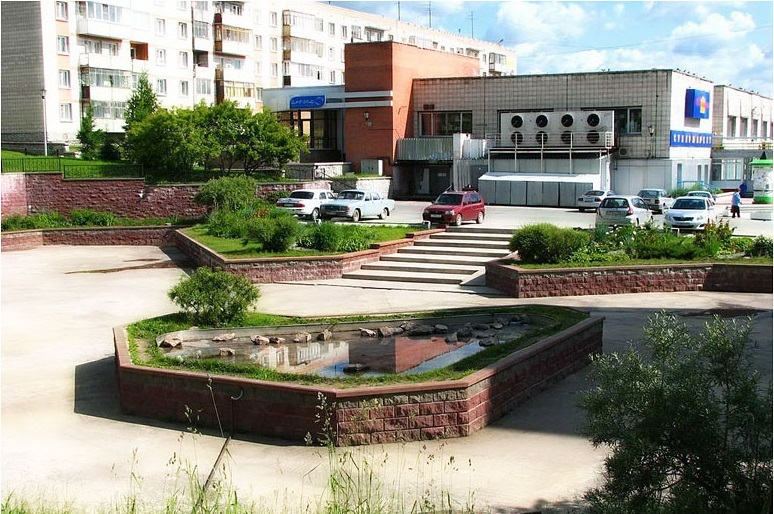
Pervomaika is a very specific place, and because of this, housing here is inexpensive. If you search very well, you can buy an apartment inexpensively.
Sovetsky district
Finally, Sovetsky district, where the iconic Akademgorodok is located. This is the Vatican of Novosibirsk, a state within a state, and often the residents of the district themselves do not refer it to Novosibirsk – they say not “I went to the center”, but “I went to the city”. The district itself is very large – 77 km2, the population is about 140 thousand.
Very often under the Soviet district is understood directly Akademgorodok or just Akadem. Famous among its residents phrase from local KVN “Akademgorodok is a forest” corresponds to reality in many respects. Indeed, many micro-districts are almost entirely located in the middle of real forests, and their residents feed from their hands absolutely fearless squirrels.
What Akadem grew up around is, of course, the Siberian Branch of the Russian Academy of Sciences. Therefore, there is approximately one university and a couple of research institutes per capita. This may be hyperbole, but really – there are forty research institutes here.
Akademgorodok itself is divided into two main zones. The first one is the “Upper Zone”: Lavrentiev and Koptuga avenues and Morsky Avenue, descending to the river. This is where the bulk of the institutes are located. These are beautiful places where active construction is underway. With infrastructure and ecology here is in good order, the streets themselves are wide, cozy and drowning in greenery. Along Morskiy Avenue you can get to the big beach on the shore of the Ob Sea.
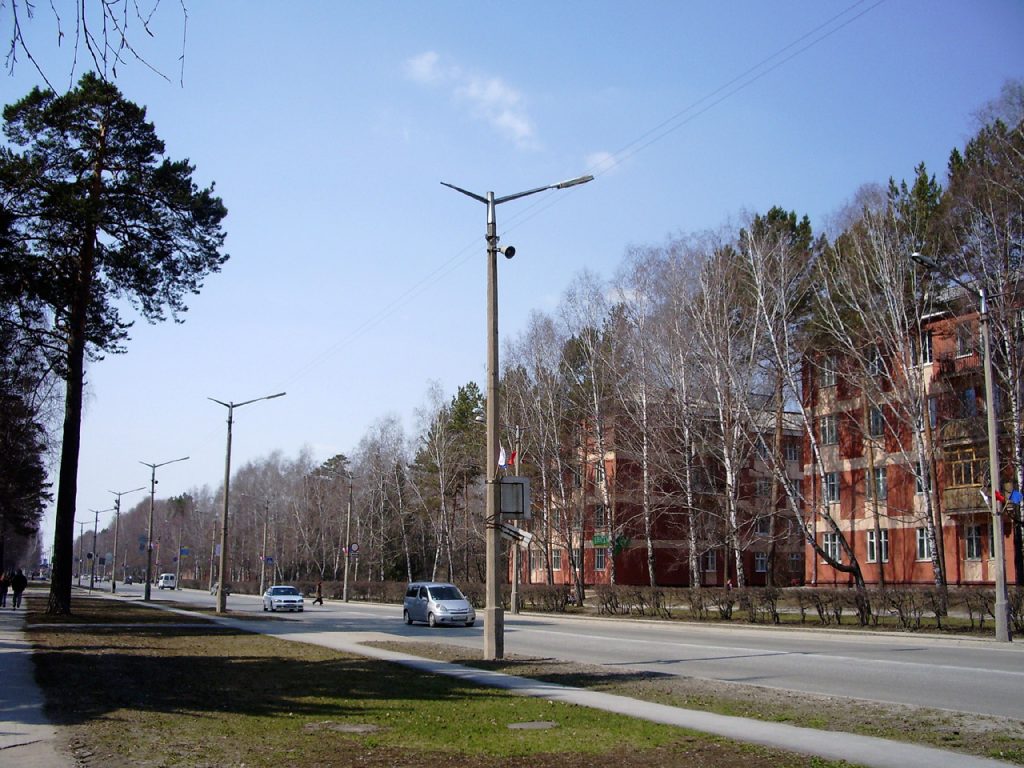
The second part of the town is a microdistrict with the warming name “Shch”. The etymology of this name is very vague. The main version is that it comes from the temporary houses in which the builders of the district lived. This is a typical bedroom district, very cozy and comfortable. There are endless forests around.
A little before reaching the entrance to Akadem, you can drive into Nizhnyaya Eltsovka – a neighborhood, about half consisting of standard panel housing estates and dacha settlements. Especially worth noting is Zelenaya Gorka Street – a place of prestige and even elite, where in the middle of the compulsory forest actively built settlements with expensive cottages. The minus of the neighborhood is only one – underdeveloped infrastructure. There is no, for example, a decent polyclinic – sick Yeltsov residents have to go to “Shch”. If you don’t have a car, it’s bad enough: there’s not much in the way of shuttle buses (let alone municipal transportation).
Finally, a separate part of the Sovetsky District is Ob HPP. It is not related to Akademgorodok in any way and is located on the left bank, behind the lock of the Ob Reservoir. It is a harsh place. An old proverb about the district says: “Wonderland – who drove in, disappeared”. Once these places enjoyed about the same fame as Pervomaika. However, now it has become calmer, but it is better not to go to some places in ObHPP without a big company. Perhaps the biggest problem of the residential area is very poor infrastructure, lack of “leisure” places and absolute transportation remoteness from anything (if Koltsovo is the “edge of geography”, ObHPP is the “edge of the edge”).
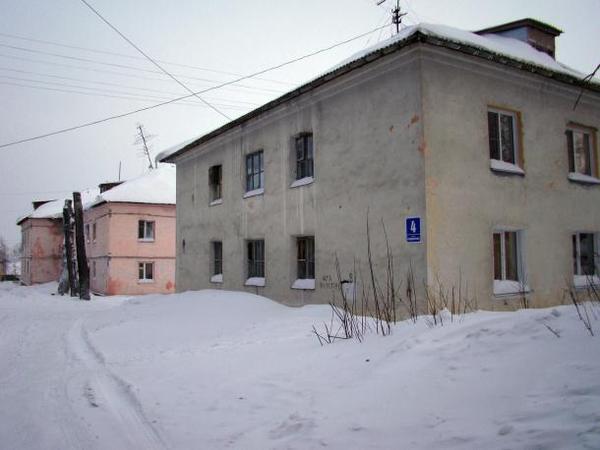
Naturally, the cheapest apartments are in the “left bank” of the Savetsky District. Apartments in the Upper Zone can cost twice as much. There is nothing to say about elite apartments somewhere on Zelenaya Gorka – they are not cheaper than in the center.
City infrastructure
Like many large cities with explosive population growth, the infrastructure of Novosibirsk does not keep up with its growth. Let’s be frank: the city’s infrastructure is an eternal tragedy for its residents and an object of tempestuous curses to the city administration. And that goes for absolutely everything that is meant by “infrastructure” at all.
For a hypothetical Chinese army to seize Novosibirsk, it would be enough to firmly block just a few major highways – and the city would be completely cut off and immobilized. It is understandable: the city grew somewhat chaotically, with a very conventional layout, long before the total motorization of its inhabitants. That is why every morning and every evening all more or less lively areas of the city stand in dense traffic jams. Chaotic efforts of the city authorities to widen old roads, build new ones, create road junctions – all this is met with a lack of budget. For example, the construction of the most important interchange leading from the bus station to Bolshevistskaya and the bridge was started in 2008 (just at the beginning of the crisis) and frozen for three years. As a result, the authorities’ activities simply do not have time to cope with the expanding army of motorists.
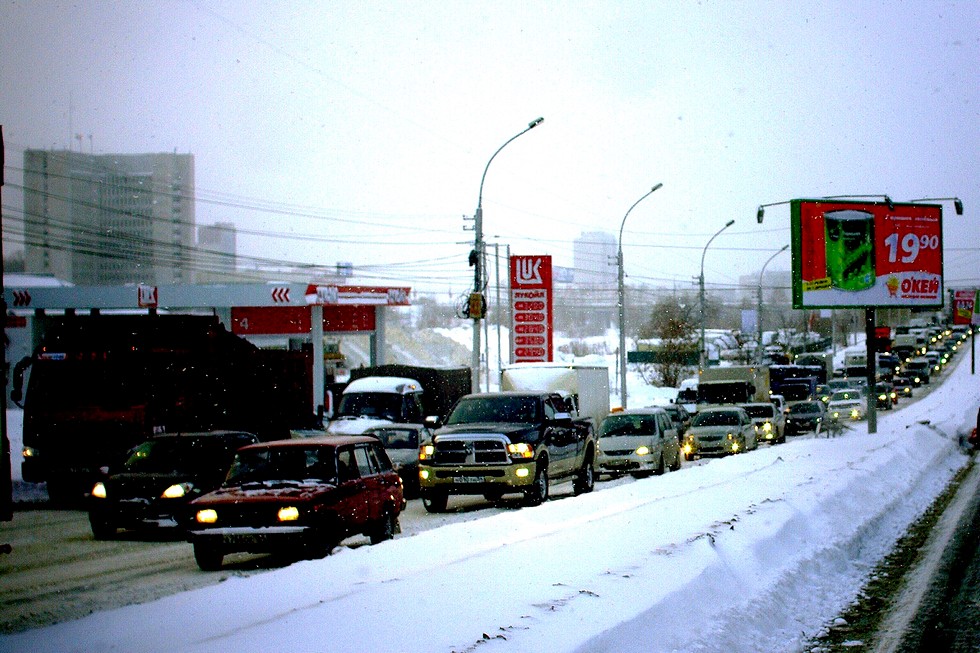
A very vulnerable point is the connection between the right and left bank. Now it is provided by two bridges, the Kommunalny and Dimitrovsky bridges, and a lock crossing in the Sovetsky District. Naturally, during rush hours, the bridges stand still.
That is why more and more Novosibirsk residents, even motorists, often prefer the metro. The Novosibirsk subway is a very important part of the city. Apartments “along the subway line” can cost twice as much as those located in less convenient places. Where the metro is, there is the center, there is civilization, there is development. It counts 13 stations, plus one mothballed and several promising ones.
In general, things with public transportation in the city are not cloudless. Bus, trolleybus routes are becoming less and less every year – the reins of power are given into the hands of private carriers. In every district there are streetcar lines, which often become the objects of burning hatred of car owners: after all, the roads are already narrow, and you can’t drive on streetcar tracks (although if you can’t, but you really want to, then, of course, you can).
Novosibirsk roads are a knife in the heart of every local motorist. Some roads, including the central highways, cannot even be called potholes – they are real minefields, a means of strategic defense against mechanized columns of the enemy army. In summer, numerous potholes are masked by puddles, and the driver never knows whether he will run over such a pothole or will plunge right into it, losing a wheel? In winter, all this freezes, and water drips turn into some absolutely wild spikes – like “thorns”, which are laid on the road by traffic cops to intercept cars.
Utility services should be in charge of all this, but who they are, where they are, and whether they exist at all is a question that is not so easy to find an answer to. As a rule, citizens remember about public utilities when a multi-meter fountain of boiling water explodes from a burst pipe under the pressure, and large shrapnel of asphalt and pipe debris bombards nearby cars and houses, and the surrounding area is filled with confused people in blue overalls (there have been at least three such cases in the city center in the last couple of years alone).
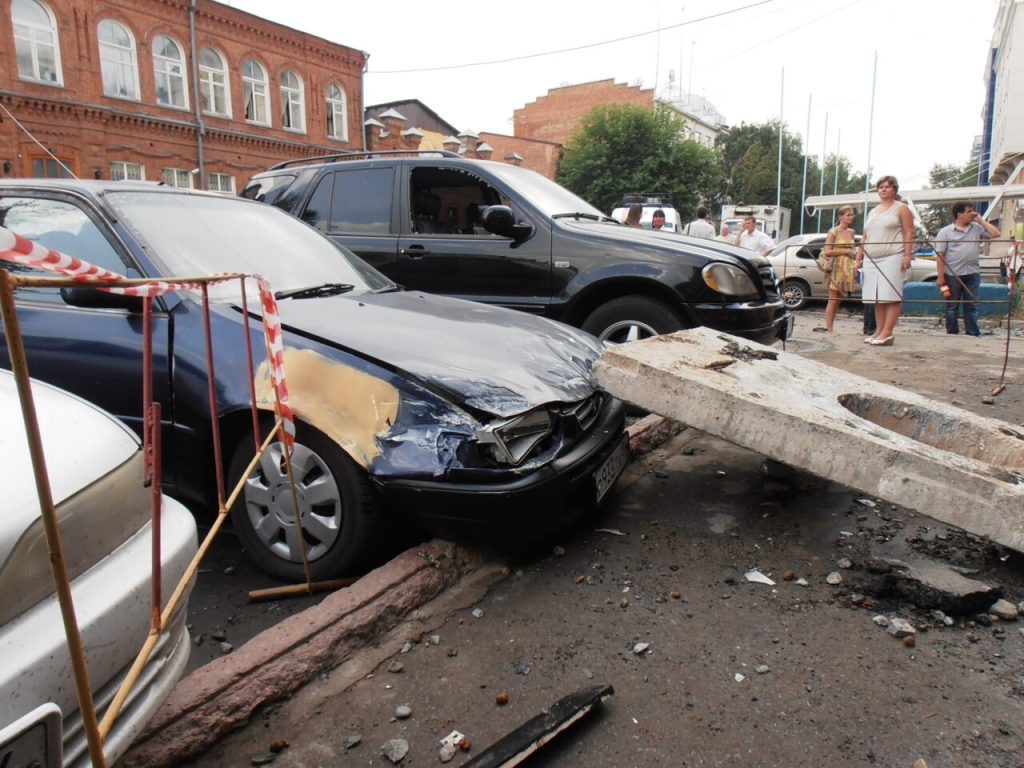
The same thing happens on the scale of a single apartment. Utility services in Novosibirsk are refreshingly expensive, but it is difficult to get a return for such money from the utilities.
Well, the huge number of utilities workers who do not show themselves in any way seems to be designed to compensate for the infrastructural deficiencies of the city – at least quantitatively. For example, the lack of pre-school institutions for children. The meme “They’d better build a kindergarten!” has become a catchphrase in the city, with which the citizens react to every ruinous initiative of the local authorities. And they can be understood – in some residential areas, especially freshly built up, parents risk taking to the garden not their children, but their grandchildren, by the birth of which the queue will be just in time.
Enterprises and work in Novosibirsk
Novosibirsk is an industrial city, and this trend is firmly held since the war, when many factories from all over the western part of the country were evacuated to the Urals. Actually, even now industry is the backbone of the city’s economy. Moreover, industry in the city is the most diverse. Novosibirsk has developed machine building, car building and even aircraft manufacturing (legendary NAPO named after Chkalov). In general, the volume and diversity of Novosibirsk industries are very high – from Westfalika shoes that are used throughout Siberia to nuclear fuel, which is produced at NZHK, to the constant dismay of the residents of the Kalininsky district living nearby.
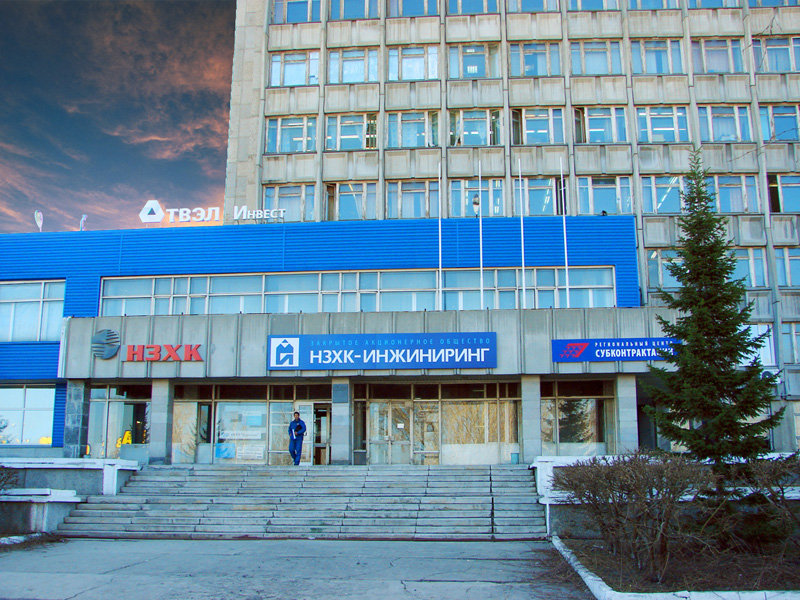
Of course, one cannot paint the state of affairs in the industry with rainbow colors alone. The destructive 90s could not pass without a trace, and almost all Novosibirsk factories, except for the leading ones, have half of their premises given to tenants – for offices, side productions, or even warehouses. Many large factories are very dependent on the state order – and even 15 years ago this order could be waited for like the weather at sea. Therefore, the factories themselves were idle, and people sat without work. However, in those years this was by no means a Novosibirsk exclusive – the whole country was suffering from similar diseases.
In recent years, the situation has slowly started to improve – and although things are still quite deplorable in many sectors, but, in any case, it is no longer comparable to the 90s. Novosibirsk’s geographical location plays its own important role – it is the crossroads of Siberia’s transportation routes, the Rome to which all roads lead. The city is positioned by the authorities as the largest transportation and logistics hub in the Urals, and here the officials are surprisingly straightforward. The amount of warehouse space here is huge – accordingly, the number of people employed in logistics and cargo transportation is also not insignificant.
As for the level of wages and standard of living in general, it is quite high in Novosibirsk.
Of course, Novosibirsk itself is an expensive city: for example, public transportation fares are 4-5 roubles higher than in many other Siberian cities. On the other hand, there are many food retailers in the city: both giants with all-Russian reach (like Lenta) and purely inner-city chains. They compete with each other fiercely – that’s why food prices in the city are quite tolerable.
As for jobs, it is possible to find them and a skilled worker (here, you may have to work hard), and, say, a part-time student. A huge place in the life of the city is occupied by all sorts of trade – so employment there is quite easy to find. It was mentioned above about the abundance of large retail chains like “Lenta” or “Eldorado” – they are constantly looking for staff (especially considering that in the city are constantly appearing more and more new stores and shopping centers).
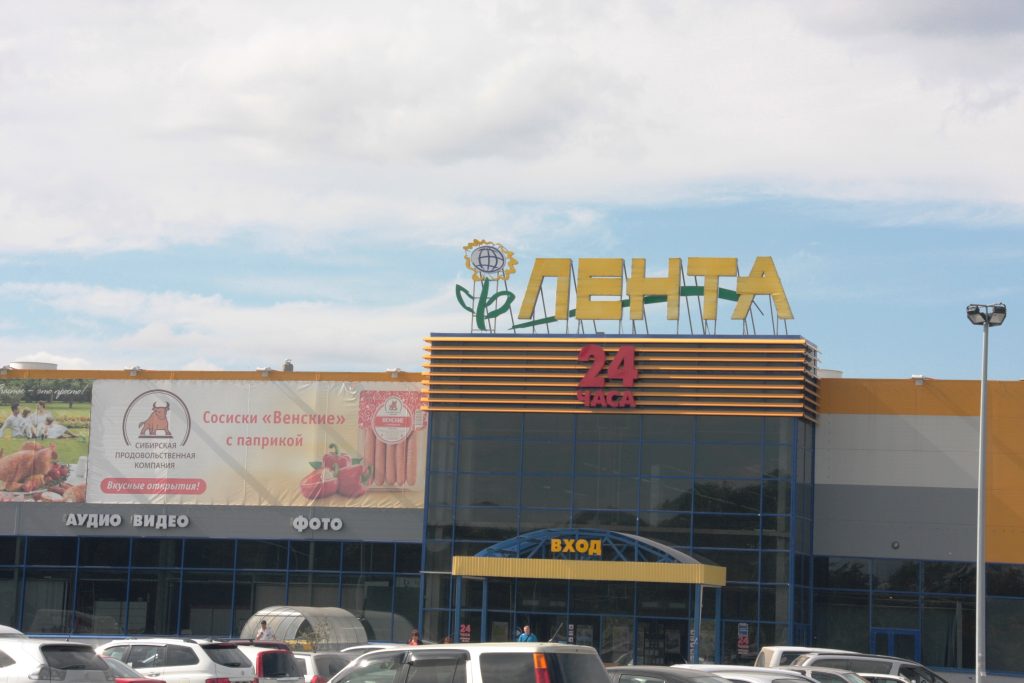
There are a lot of offers for catering workers: it is almost always possible to get a job in, say, the “Fork and Spoon” chain of canteens or the numerous establishments of the “Coffee/Sushi Terra” chains. In the case of pubs/coffee houses/sushi bars, i.e. places where, let’s say, the middle class goes, a very important factor is tips – a good waiter on tips can raise a monthly sum comparable to a monthly salary.
Qualified employees are expected, for example, at factories – “blue-collar workers” are traditionally in demand. It is true that some plants do not even have functioning personnel departments, but giants like Sibselmash or NZHK will still not refuse to take in an experienced employee. Unfortunately, however, the salary there is often many times less than at private production facilities, and it fluctuates depending on the specialization.
Very serious money can receive workers associated with repair and construction services. For example, workers of the huge company BFK, engaged in the installation and production of plastic windows, not only get decent money, but also working conditions there are more than decent – for example, free retraining and certification of employees in a special Training Center, bonuses, a full social package.
But budgetary workers in the city live a little harder. Though the authorities constantly loudly declare about improvement of working conditions for doctors and teachers, annually arrange pathos programs like “Affordable housing for young people (substitute profession)”. – but the reality does not correlate well with the administration’s rosy assurances. Teachers employed in “regular” schools are frantically looking for part-time jobs and extra hours, and doctors are massively moving either to private clinics or to medical representatives of large pharmaceutical firms like Shreya or Bayer.
Novosibirsk is criminal
Speaking of crime, it is difficult to ignore the notorious 90s. Then in the city, as in all of Russia, however, reigned a real bacchanalia. Young delinquents (common parlance: gopniki) even in the center of the city quietly took (not take away, but exactly took away) from teenagers all pocket money, their older comrades were doing something more serious. The legendary “May Day” group – tough guys, mostly former unicyclists from May Day sports clubs, who could “divorce on their fingers” even the devil in the underworld – covered themselves with undying glory.
Ordered murders, raiding, “black redistribution” – all these inexorable signs of time have now slowly undergone a volcanic crust, from under which from time to time an alarming gurgling can be heard. From the open criminal rampage of the 90’s managed to more or less get away – and now in the criminal chronicle more often you can see the standard everyday life.
Not everything, of course, is so calm. For example, local law enforcers are very concerned about the famous “flea market”. It is a surreal mixture of a regular market, an oriental bazaar and a chinatown. Anarchy and chaos reign there. If you go there to shop, you’d better keep your money in a titanium box handcuffed to your wrist. Adjacent to the flea market is the gloomiest private sector, where even PPS patrols do not risk going at night. At the same time, some absolutely obscene financial flows pass through the flea market, and quite a few Novosibirsk officials have already been caught up in “covering” local organized crime groups.
Another sensational criminal story of recent years is the case of Novosibirsk vice-mayor Solodkin and his father, a prominent sports functionary. The investigation believes that the Solodkins were linked to Alexander Trunov’s organized crime group – a grandiose, by local standards, underground empire that was closely allied with the city authorities. With great efforts this snake’s tangle was finally cut – Trunov and his comrades-in-arms will look at the pigeons flying over the zone from 15 to 22 years, and Solodkins await their fate under investigation.
In addition, there are also surrealistically crazy stories – like a group of students who stole a plaster Statue of Liberty from a local pizzeria, dragged it with great difficulty to the nearest yard, and then abandoned it there. The rest is mostly typical thefts and robberies, murders “in the process of drinking together” and drug police raids on drug dealers’ cottages.
Leisure and attractions of Novosibirsk
Although Novosibirsk is a relatively young city, but it has already managed to form its own attractions – in any case, there is always something to see in the city for both visitors and locals who have lived here for thirty years.
Usually, describing local places to visit, first of all mention the Opera and Ballet Theater. This is not surprising – after all, the largest theater site in the country, with the original architecture and repertoire, which includes, perhaps, all the most iconic operas and ballets in history. In general, Novosibirsk is a theater city, and the Opera House and the Globe are also absolutely amazing places from a purely architectural point of view. Whatever set of postcards with views of the city you take, there will certainly be pictures of these buildings.
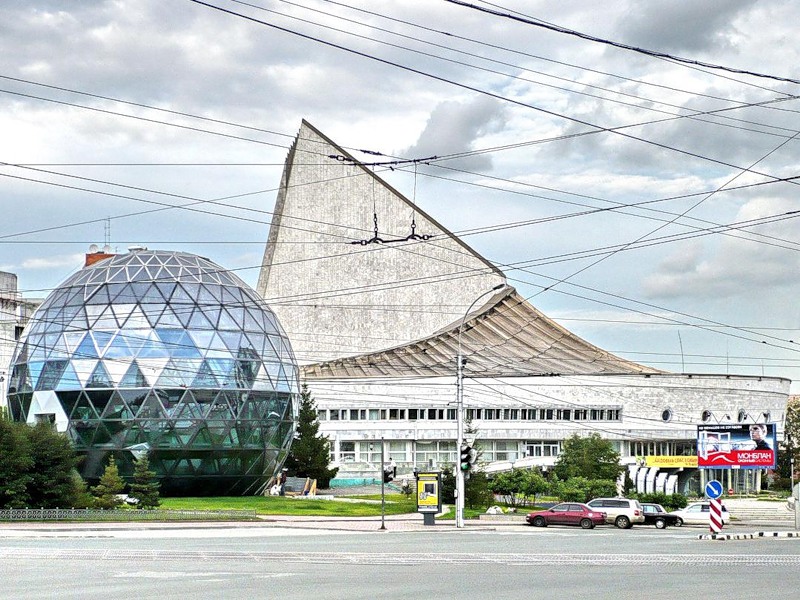
However, let’s say that you are not a theatergoer at all, and it’s not a good idea to take your children to see “Richard III”. Well, in such a case you should definitely go to the Novosibirsk Zoo with your family. Back in the 90’s the old zoo was a very sad sight – zero vegetation, small cramped enclosures with unhappy animals. The current zoo moved from the city center to Zaeltzovsky district and spread out on a huge territory (three times larger than the Moscow zoo, for example) right in the middle of the forest, adjacent to the Botanical Garden. Now it is the pride of Novosibirsk, where even those animals breed, which in captivity usually do not breed at all. It has one of the largest collections of felines in the world, including absolutely exclusive ligers.
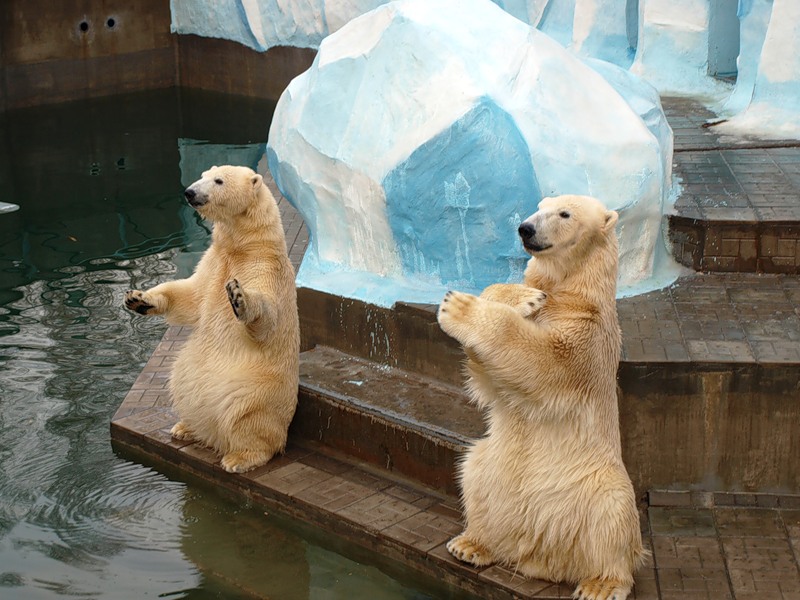
However, if you are a “round-the-clock party-goer”, for whom the issues of family leisure are not very relevant, you will still have something to do in Novosibirsk. Club life in the city is boiling, and this is especially true, of course, for the center. The abundance of 24-hour restaurants, pubs (Irish pubs are very popular in the city), nightclubs – all this contributes to the fact that at night in the area around Lenin Square is as lively as daytime. Other districts are also not lagging behind – for example, the famous club “Rest”, where the real stars of world music perform, is located in the Kalininsky district, on “Bogdashka” (interestingly, two steps away from it is the ice palace “Sibir”, where the local hockey team plays, there are also concerts of such megastars, which gather many thousands of spectators). The Guevara club at the intersection of Oktyabrskaya and Serebrennikovskaya is also more than original, with charming waitresses in berets with a red star and dishes named after significant places and events of the Cuban Revolution.
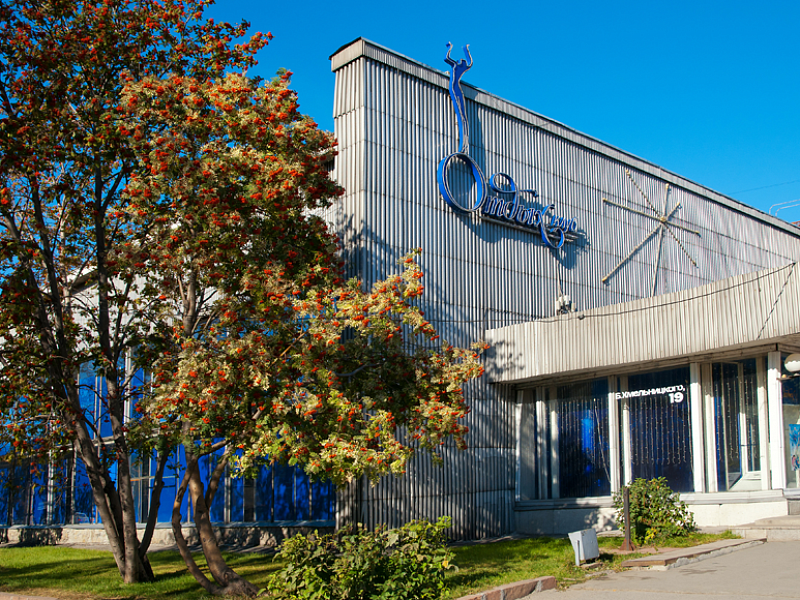
You can eat in general in the city for every taste and level of wealth: from the democratic chain “Vilka-Lozhka” with a dozen canteens throughout the city, to elite restaurants like “U Vatslav” on Gorky St. or “La Maison” in a cozy mansion at the intersection of Gorky and Sovetskaya (its level is eloquently evidenced by the fact that in 2008 it was there that V.V. Putin and Nursultan Nazarbayev dined. Putin and Nursultan Nazarbayev dined there). The price tag in these restaurants, of course, is higher than average, but the service is exorbitant. But in the same “Vilka-Lozhka” or the numerous pizzerias of the “New York Pizza” chain, you can have a good meal for 120-150 rubles.
Sushi bars are very popular with Novosibirsk residents, and there are many of them in the city: for example, the restaurants of the Sushi Terra chain are scattered throughout the center of both the left and right banks. If you don’t like it there, you can go to “Harakiri” on Gorskaya or “Sov. Siberia.
You are not interested in club life either, you don’t want to eat – but you are a movie buff? Well, there are plenty of cinemas in the city. The most famous are probably in the center – “Mayakovsky”, “Pioneer” and luxurious “Pobeda”, which was reconstructed almost all “zero years” and only a few years ago was reopened with great pomp. Almost all shopping and entertainment centers are also opening 3D-cinema halls created by the most modern technologies (including IMAX in the largest megaplex “Cinema Park” near Kalinin Square). And at the very beginning of Red Avenue, next to the bus station, there is a tiny, but absolutely cult movie and video hall “Cinema” – it shows outstanding author’s cinema, which is not available in “ordinary” cinemas by day and night.
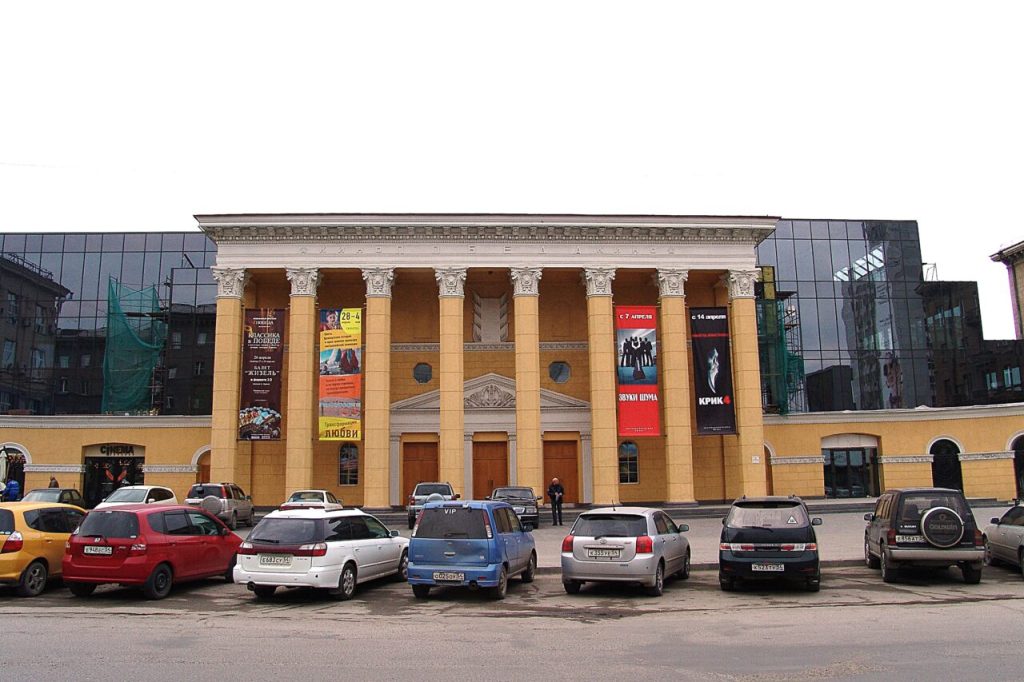
And even if you just want to wander around the city without going anywhere, there is always something to see.
This is the city embankment – it looks much worse than, say, the Omsk embankment, but recently it has been actively improved; there, for example, is a part of the very railroad bridge, from which the history of the city began.
It is also the chapel of St. Nicholas on Krasniy Prospekt – a place of pilgrimage for newlyweds, which before the revolution was considered the geographical center of the empire. In Soviet times, the chapel was demolished, but by the 100th anniversary of the city it was rebuilt again, and now it is also an indispensable element of postcards with views of the city.
Finally, there are local parks, each of which has its own “feature”. For example, in Pervomaysky Park there is a cult fountain in the form of a bear cub – on its fence the same newlyweds, having given in to a strange new trend, began to hang symbolic locks and covered it with literal bunches. In the park near the Water Institute, a cozy Family Alley has recently been opened with sculptures depicting, again, newlyweds. Central Park is simply the largest amusement park in the city, where both children and adults can find something to do, and on weekends you can see a touching spectacle – pensioners dancing in front of the bandstand to the rhythms of the old days.
